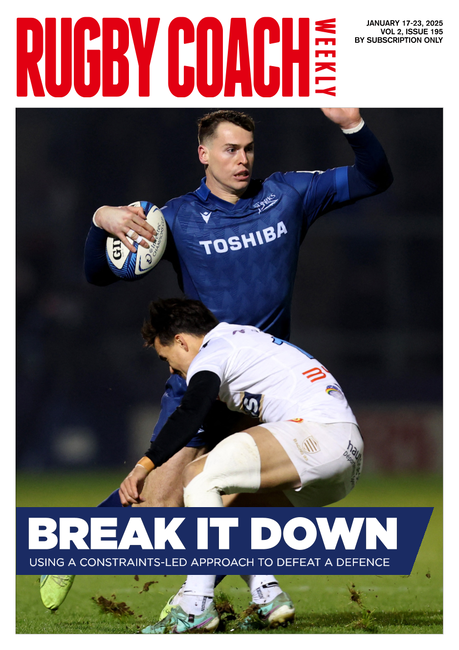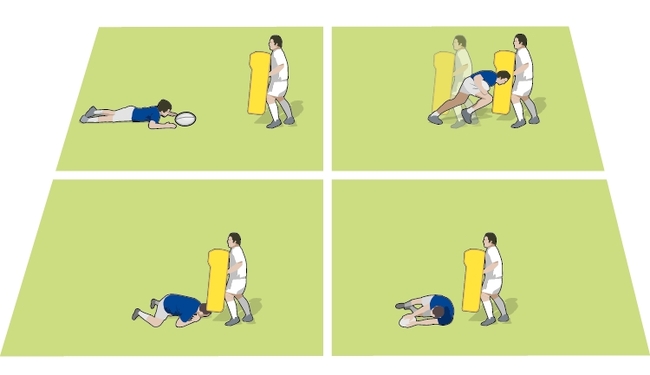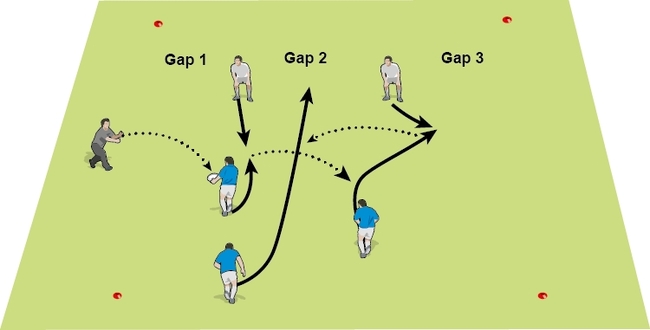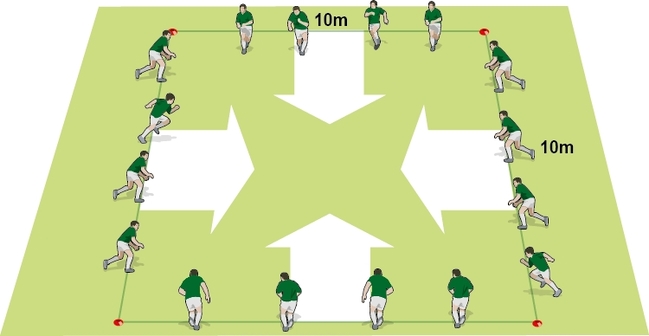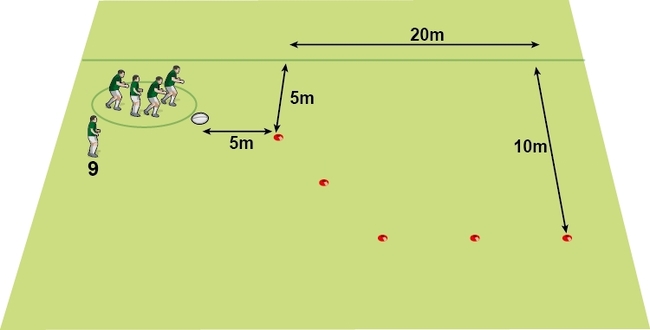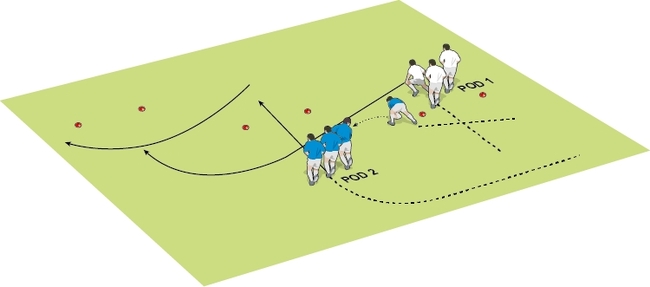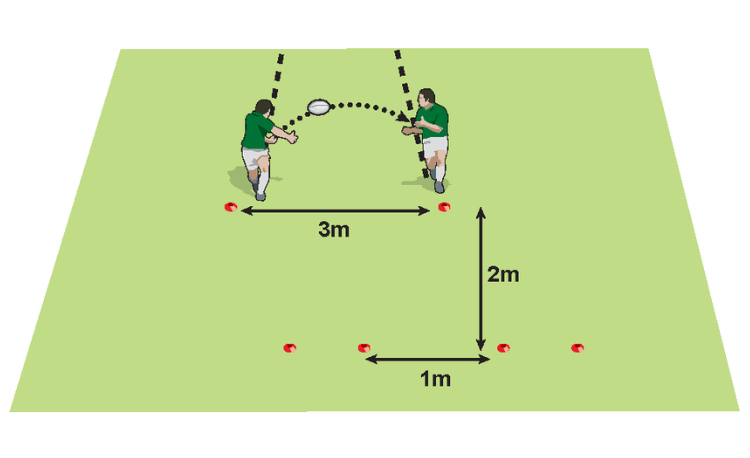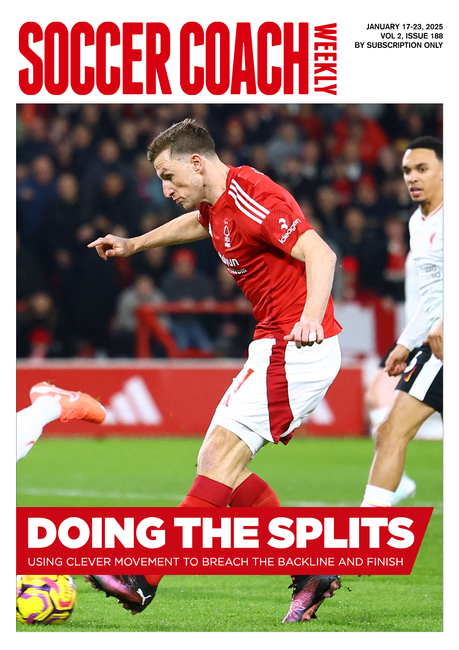Two v one continuous rugby drill
There are a number of problems with the round-the-corner rugby drill because:
1. It forces an unnatural barrier onto the ball carrier
As the attacker turns the "corner", he is faced with a touchline on his inside. The defender's job is now easier because he does not need to commit to an aggressive tackle if he simply wants to push the attacker out of bounds.
It is unlikely we would want the ball carrier to "preserve" space in the game by running close to the touchline.
2. It reduces creativity for both attackers
Since the attacker normally "preserves" the space by attacking close to the sideline, there is a limit to what the support player can do. There are no decisions on angles of run or width of pass. The ball carrier is limited to passing wide or dummying.
3. Non-participants are poorly positioned to observe the drill
Lots of "learning" can come by observing what works and doesn't work. In the set up for a round-the-corner rugby drill, the next participants often line up on the side with a poor view of what is happening in the box. This reduces the ability of other players to learn from the others' good and bad play.
Alternative drill
A solution to these problems is to use the following rugby coaching drill where players enter through the try zones.
By starting the drill through the try zones, the players can observe more, the drill allows more decisions from the support player and inevitably more decisions for the defender.
Make sure the defenders are back from the try zone and the ball carrier touches down the ball to score.

Continuous 2v1 rugby drill
- I like to create a more game specific session with this type of drill by making the whole drill continuous.
- Split into two equal teams. Mark out a 10 metre wide, 20 metre-long box. One team will defend one end and attack the other and vice versa.
- The game starts with one team attacking with two players v one defender. Once the attack is over, whether successful or not, the other team attacks. Make sure you tell them when the attack is over, however it is up to the other team to know when to start the attack.
- Previous attackers and defenders need to clear out of the box as soon as the attack is over. They return to their teams and work out when they are next going to attack or defend.
- A quick attack might surprise a defender.
Newsletter Sign Up
Coaches Testimonials

Gerald Kearney, Downtown Las Vegas Soccer Club

Paul Butler, Florida, USA

Rick Shields, Springboro, USA

Tony Green, Pierrefonds Titans, Quebec, Canada
Subscribe Today
Be a more effective, more successful rugby coach
In a recent survey 89% of subscribers said Rugby Coach Weekly makes them more confident, 91% said Rugby Coach Weekly makes them a more effective coach and 93% said Rugby Coach Weekly makes them more inspired.
Get Weekly Inspiration
All the latest techniques and approaches
Rugby Coach Weekly offers proven and easy to use rugby drills, coaching sessions, practice plans, small-sided games, warm-ups, training tips and advice.
We've been at the cutting edge of rugby coaching since we launched in 2005, creating resources for the grassroots youth coach, following best practice from around the world and insights from the professional game.


